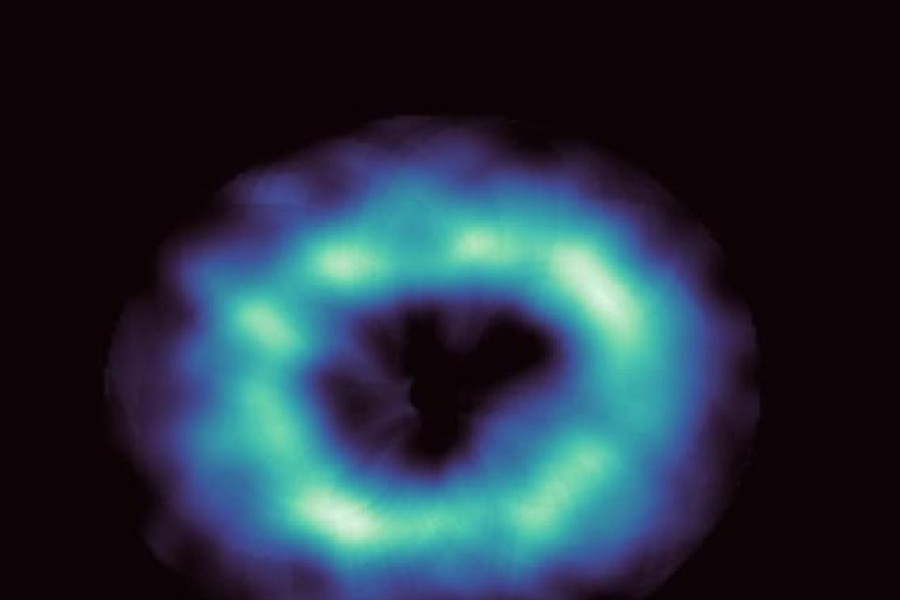Indian astronomers have helped identify the region within the disc around a young star where gas molecules and dust particles are condensing into planets, marking an early state of planet formation never observed before.
Although scientists have catalogued over 5,800 exoplanets, including many baby planets, orbiting other stars since the mid-1990s, the new findings represent the first telescopic observations to pinpoint planet emergence zones within the swirling clouds of gas and dust.
Liton Majumdar at the National Institute of Science Education and Research (NISER), Bhubaneswar, and his colleagues have detected chemical signatures that mark planet formation regions around GG Tau A, a star estimated to be less than five million years old. For comparison, the Sun and the solar system are about 4.6 billion years old.
The star GG Tau A, located 489 light years from the solar system in the direction of the constellation Taurus, is surrounded by a massive circumstellar ring of gas and dust and a bigger outer disc. It is an ideal place to look for planet-forming regions.
Almost all catalogued exoplanets are fully formed planets orbiting their stars at various distances or smaller baby planets still growing by accumulating gas and dust around the stars.
“The areas within discs around young stars where exoplanets accumulate their building materials have been notoriously difficult to detect,” said Majumdar, a faculty member and head of the exoplanets and planetary formation research group at NISER.
Majumdar and research scholar Parashmoni Kashyap at NISER led a 20-member international team that used a telescope at a high-altitude site in Chile to conduct precise measurements of the chemistry within the gas and dust cloud surrounding GG Tau A.
“We expect the planet formation regions within the disc to be marked by the highest density of gas and dust and the lowest temperatures,” Majumdar said. The observations enabled them to detect chemical signatures of molecules at minus 261°C, among the coldest areas within the disk.
The team, along with collaborators from academic institutions in France, Germany, Hungary, Taiwan, the US and Vietnam, had reported the potential presence of three baby exoplanets around the same star in 2020.
The researchers say their findings, just published in The Astrophysical Journal, will provide fresh insights into the formation and evolution of planets.










